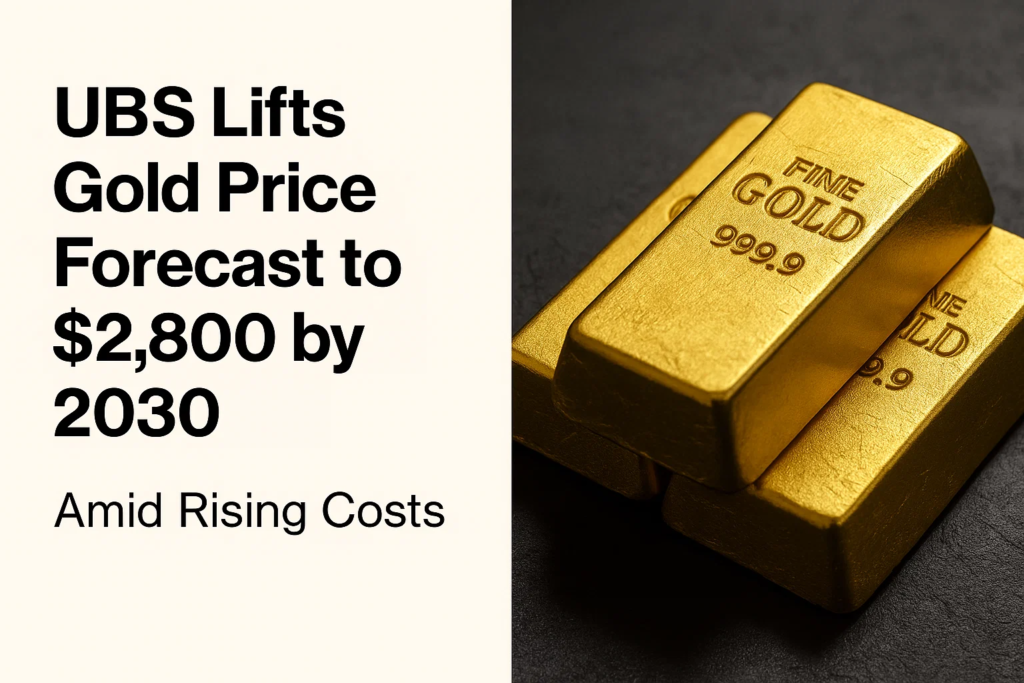UBS has upgraded its long-term gold forecast to $2,800 per ounce, up from $2,200, marking one of the most significant revisions in recent years. Adjusted for inflation, this implies a nominal price near $3,100 by 2030.
Short- and medium-term estimates remain unchanged, with UBS expecting the metal to notch fresh highs over the next several quarters before moderating in late 2026. However, analysts led by Joni Teves stressed that even after easing, prices are unlikely to revisit past cycle lows.
Instead, UBS envisions gold stabilizing at structurally higher levels, supported by both supply-side constraints and shifting global dynamics.
Rising Costs and Tight Supply
The bank’s upward revision is driven by “structurally higher production costs” and constrained mine supply growth. Instead of pursuing large-scale mergers, many producers are focusing on:
- Organic expansion within existing portfolios
- Regional consolidation to strengthen market positions
- Portfolio adjustments aimed at efficiency
With operating costs climbing, the incentive for aggressive production remains muted. UBS projects that tighter supply will reinforce long-term price resilience, even if short-term corrections occur.
Strategic Role of Gold Expands
UBS highlighted gold’s evolving role as a strategic asset in a world defined by shifting trade flows, heightened macroeconomic risks, and persistent geopolitical tensions. The bank expects a broader investor base to anchor demand, with portfolios increasingly accepting the negative cost of carry in exchange for diversification.
Recent demand data underscores this trend:
- Global consumer demand slipped 8% in the first half of the year, led by weaker jewelry sales.
- Investment demand surged, with Europe’s bar and coin purchases more than doubling.
- Asia-Pacific, which accounts for nearly two-thirds of global consumption, posted 17% year-on-year growth.
Meanwhile, central banks have slowed purchases to 800–850 tonnes annually—still well above historical averages.
Looking ahead, UBS expects the next major rally to coincide with a weaker U.S. inflation-growth mix, equity pullbacks, and mounting expectations of Federal Reserve rate cuts. Any policy missteps by the Fed, strategists note, could serve as a fresh catalyst.


